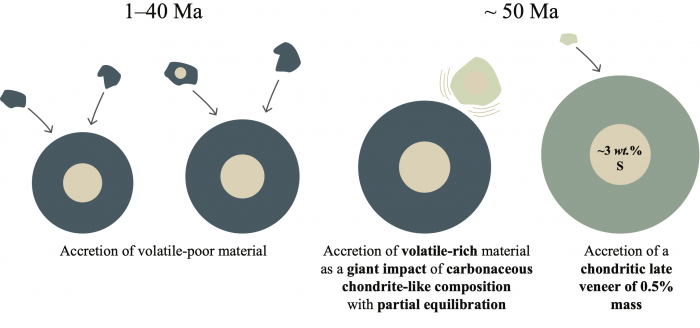Édith Kubik receives the 2022 CNFGG PhD Award
Édith Kubik received the 2022 Geophysics Prize for her PhD "Elemental and stable isotopic fractionations of siderophile elements – Implications for the delivery of Earth’s volatile elements".

Publication date: 06/12/2022
Awards and Distinctions, Press, Research
Related teams :
Cosmochemistry, Astrophysics and Experimental Geophysics (CAGE)
Related themes : Origins, Earth and Planetary Interiors











